- Home
- Best Pet for Me
- Geckos
Geckos
Crested/Day/House/Golden/Leopard/Panther/Tokay/Whitelined
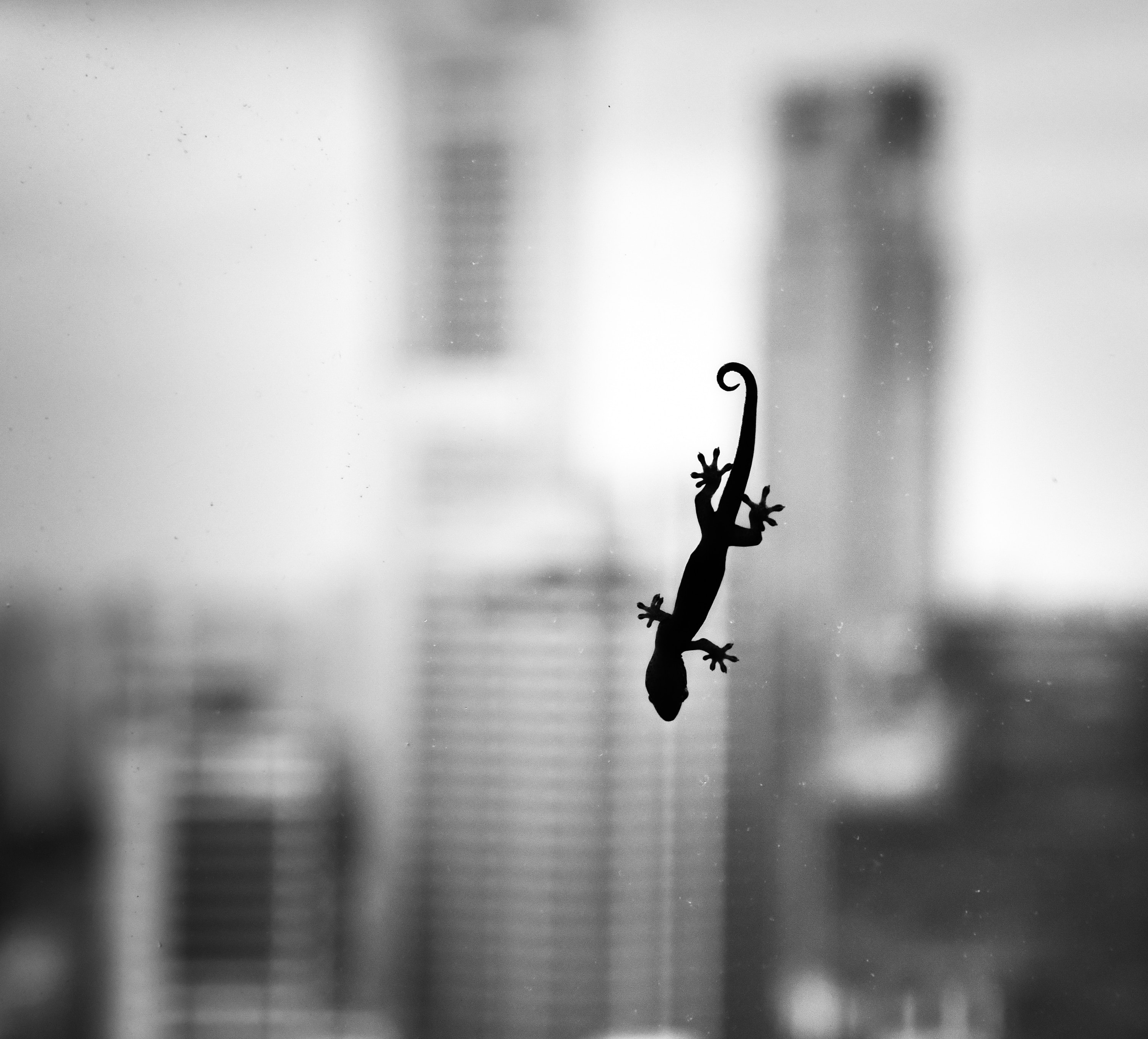 Photo by Nick Tsinonis https://unsplash.com/photos/silhouette-of-house-lizard-46VCxWL33lM
Photo by Nick Tsinonis https://unsplash.com/photos/silhouette-of-house-lizard-46VCxWL33lMThere are lots of different kinds of geckos. Even with these 8 types of geckos, there is a lot of variation within the types. For example, Day Geckos are made up of 60 species. Some of Day Geckos are harder to deal with than the other types of geckos.
The most common geckos to have as pets are leopard geckos, crested geckos, and house geckos.
Geckos have differing needs for temperature, humidity, and light. The crested gecko does poorly with high heat, and even their basking area shouldn't go above 80 degrees F. Other geckos like it hot! You need to be very careful about the heat source so the gecko doesn’t get burned. Most of the geckos are really good climbers, so they can easily get to the top of the cage. If there is a heat lamp right at the top of the cage, they might burn themselves. Also, avoid heated rocks because of the risk of burning. A well-protected heat light, a ceramic heat emitter, and under-the-cage heat mats should be used safely to keep the temperature at the best level for a gecko. One side of the cage should be hotter than the other side and you should have a thermometer on the warm side as well as the cool side of the cage. You can also use a device to measure the humidity.
Some geckos need very high humidity, and others like it a little drier. Daily misting is a good idea for most geckos. You can also get automatic misters. Peat moss or soil at the bottom of the cage helps to keep the humidity up. Most geckos do fine with drinking the bits of water that condense on the leaves of plants in their habitat.
They don’t tend to need lights, but some use of UV lights might help them make vitamin D. Red or purple night lights will help you see your nocturnal geckos at night, as well as keep the habitat warm.
You shouldn’t house two males together. Geckos tend to be fine living on their own, but having two or three is OK, too.
Dangerous?
Geckos don’t have venom. They rarely bite, but if they do, it hardly brakes the skin. Giant day geckos and Tokay geckos are the only type of gecko whose bite might actually hurt and break your skin.
Like People?
They are calm but can be wary of people. It’s not recommended that you handle geckos a lot. If they feel threatened they will tend to lose their tails. Only if they are really scared will they bite
Crested
Crested Geckos are the only ones who won’t grow their tail back if they lose it. So if your crested gecko gets really frightened and drops their tail, they will be tailless from then on. They also might try to jump away from you when you are holding them and injure themselves, so be very careful with them.
Day
Handling them could hurt their delicate skin. They are not prone to biting, but a bite from a Giant Day gecko will break the skin.
Golden
They are very shy and have delicate skin, so be very gentle if you handle them. They also might bite if they feel threatened.
House
House geckos actually live in people's houses in warm climates. When my mom lived in Arizona, she had a pet House Gecko. Lucy the Gecko did not have a cage, she generally lived under the refrigerator. My mom would give her crickets sometimes and she would sometimes come out when you made a cricket noise. If we were very slow and gentle, we could pick her up. In general, though, house geckos are too quick to run away for you to be able to pick them up. Lucy was great at eating insects that invaded my mom’s house.
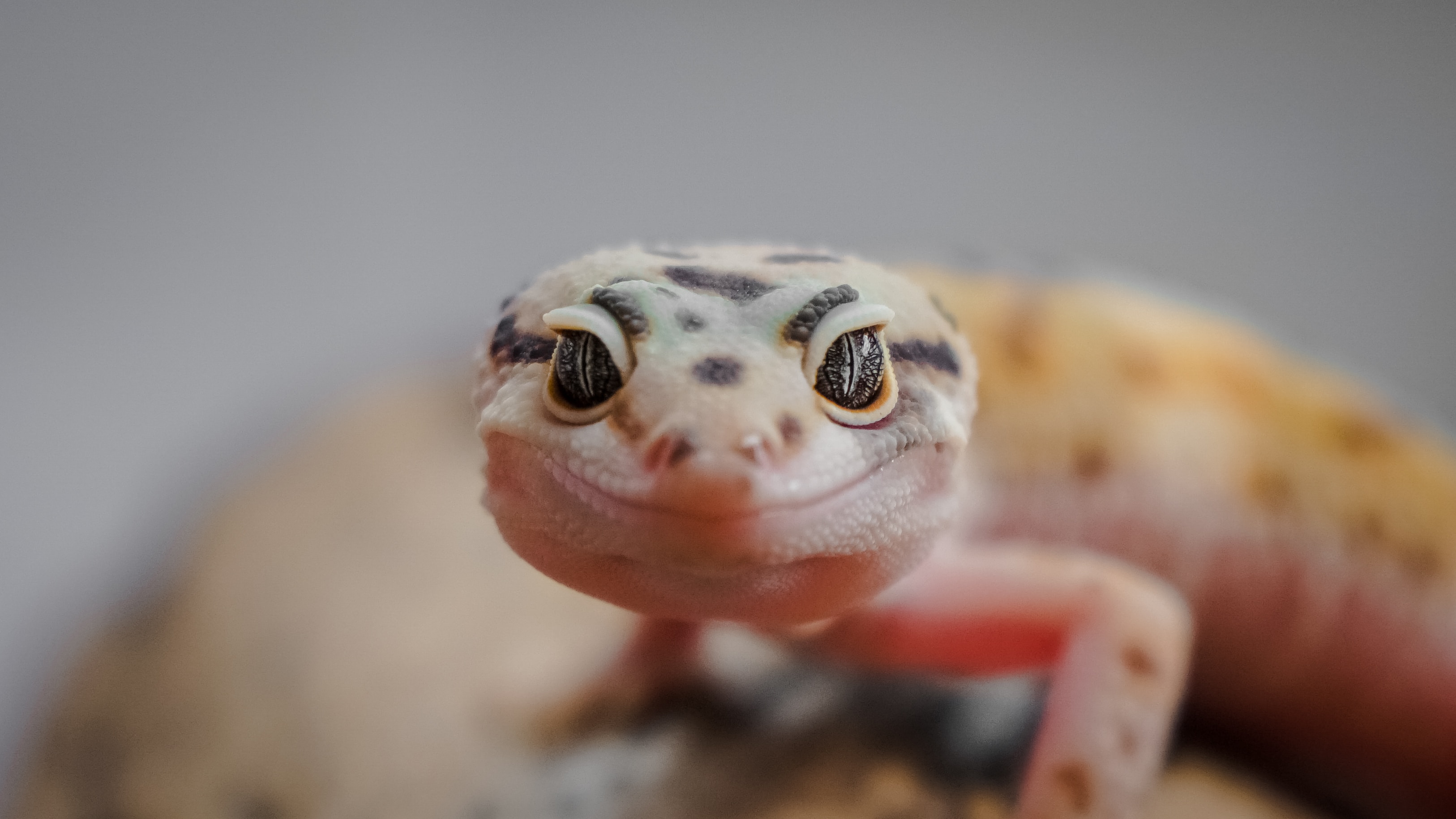 Photo by Verdian Chua https://unsplash.com/photos/brown-and-black-spotted-lizard-0SWZlIKKAMY
Photo by Verdian Chua https://unsplash.com/photos/brown-and-black-spotted-lizard-0SWZlIKKAMYLeopard
Leopard geckos can learn to tolerate some gentle handling.
Panther
Panther geckos are easy to care for, but they don't like being held. They may lose their tails or bite if stressed out.
Tokay
They can be pretty aggressive and might be prone to biting.
White-lined
Not as aggressive as Tokays, but they are very fast and will bite if they are scared.
Sleep
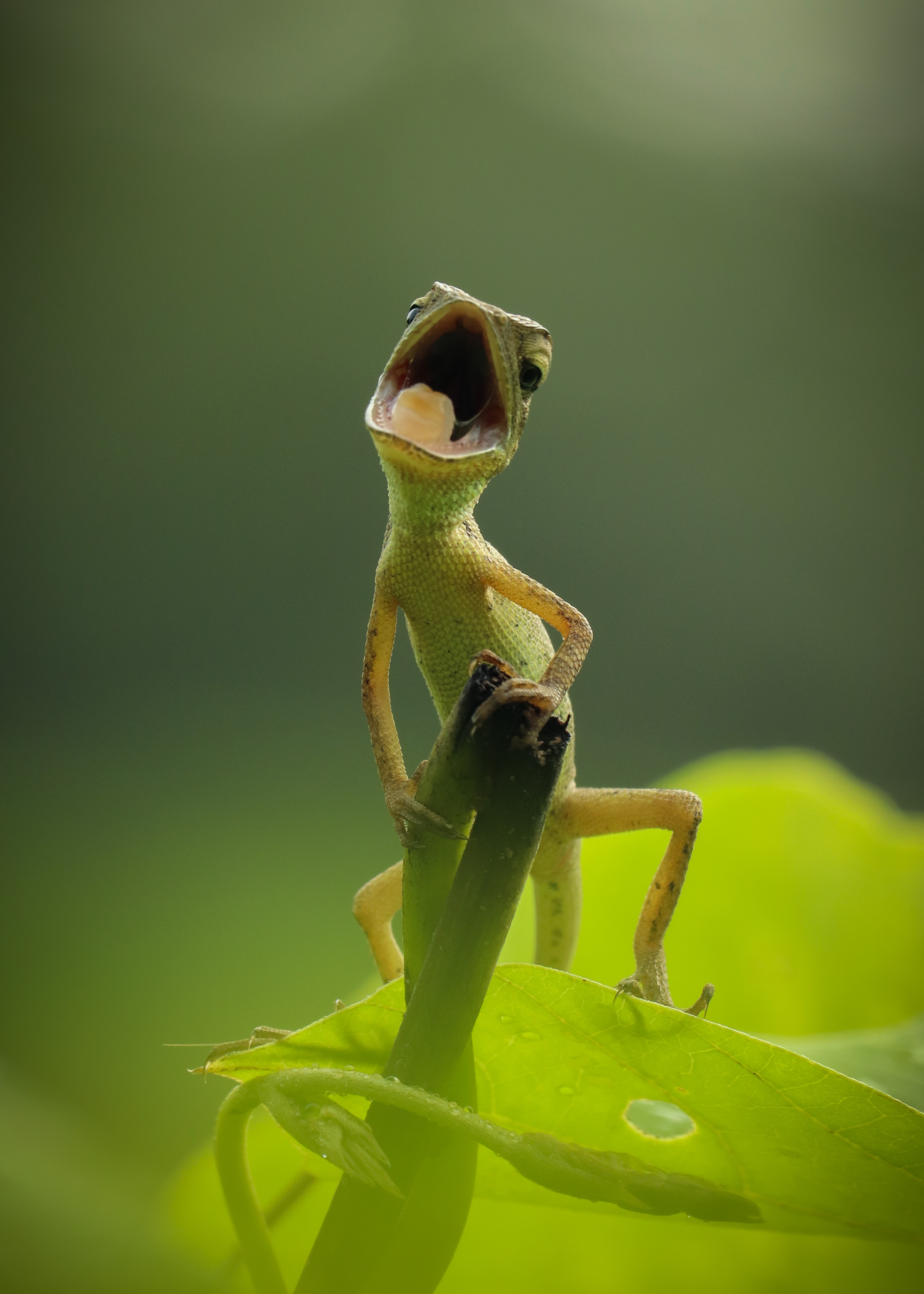 Photo by Vengadesh Sago https://unsplash.com/photos/green-frog-on-green-leaf-kZ1YbITCFtM
Photo by Vengadesh Sago https://unsplash.com/photos/green-frog-on-green-leaf-kZ1YbITCFtMDay geckos are the only ones that are diurnal - active during the day. Leopard geckos, house geckos, and crested geckos are crepuscular, meaning they are usually active at dawn and at dusk. The rest of them are nocturnal.
Size
Crested
7-9 inches, including their tail
Day
Day gecko is a name given to many different types of geckos. They will range in size from 2.5 inches to almost 12 inches.
Golden
7-8 inches
House
3-5 inches including the tail
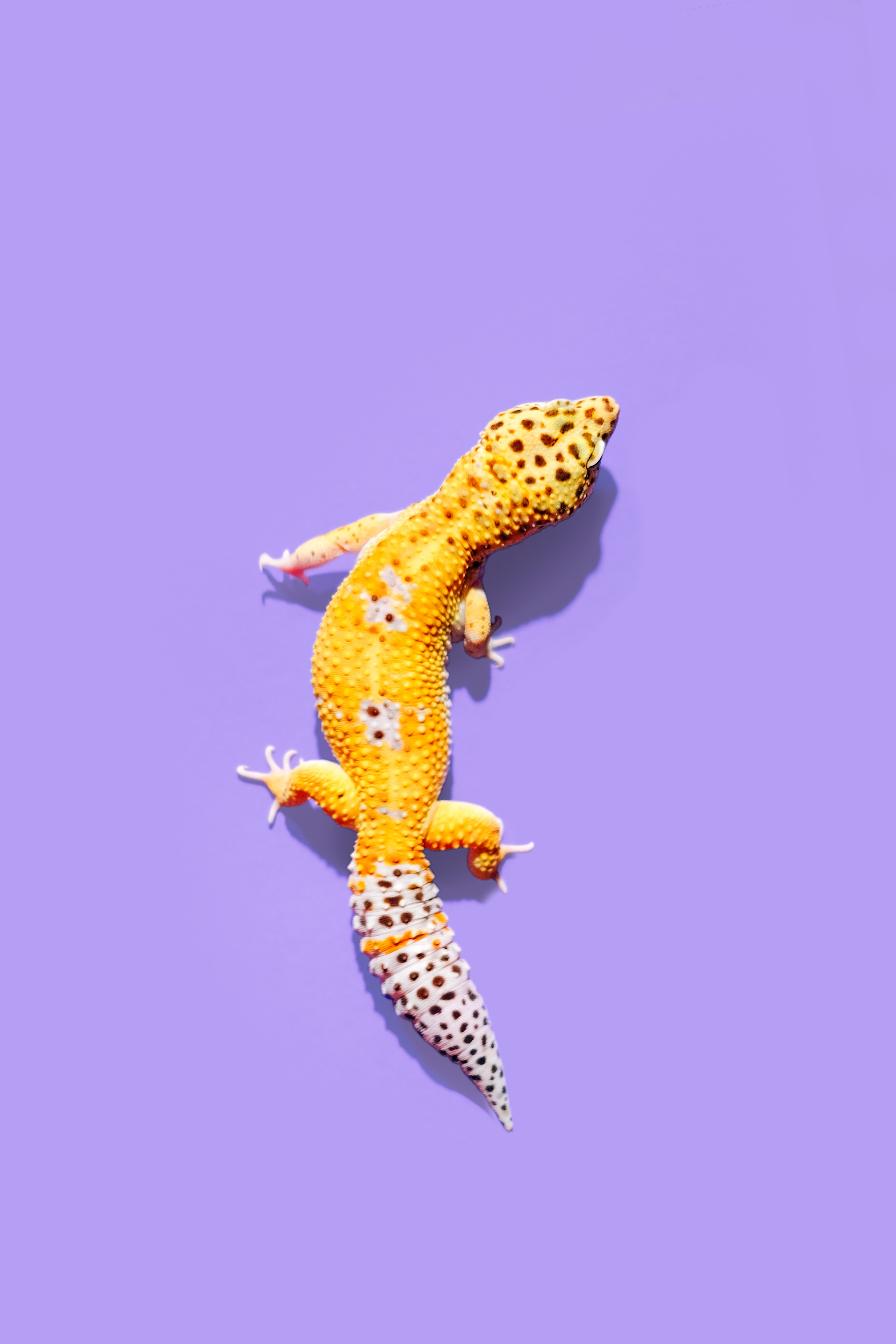 Photo by おにぎりhttps://unsplash.com/photos/yellow-gecko-cHP9WBFKm9o
Photo by おにぎりhttps://unsplash.com/photos/yellow-gecko-cHP9WBFKm9oLeopard
8-10 inches
Panther
Usually 4-6 inches, but some will grow larger
Tokay
15 inches
White-lined
9-10 inches long
Temperature and Humidity
Crested
Crested Geckos get stressed out if the temperature is too high. The enclosure temperature should never go above 80 degrees F and there should be a temperature gradient so that one end should be in the low 70s. Crested geckos don’t bask, so there should not be a really hot area of the habitat. The temperature should be from 65-75 degrees F at night.
Crested geckos are from the tropics so humidity should be high - about 50-70%. You probably need to mist the enclosure every day.
Day
Day geckos like it a little warmer than crested geckos. The hot end of the cage should be 80-85 degrees F, there should be a basking place that is 90-95 degrees F, and the cool side should be in the low to mid-70s. Temperatures can be a bit lower at night. They like the humidity between 60-80%.
Golden
A temperature of 90 degrees F should be maintained on one end of the cage and 75 degrees on the other. Night time temps can drop to 70-75 degrees F. Humidity should be 60-80%.
House
Heat should be on a gradient between 75-90 degrees F during the day and 56-75 degrees F at night with humidity at 60-75%.
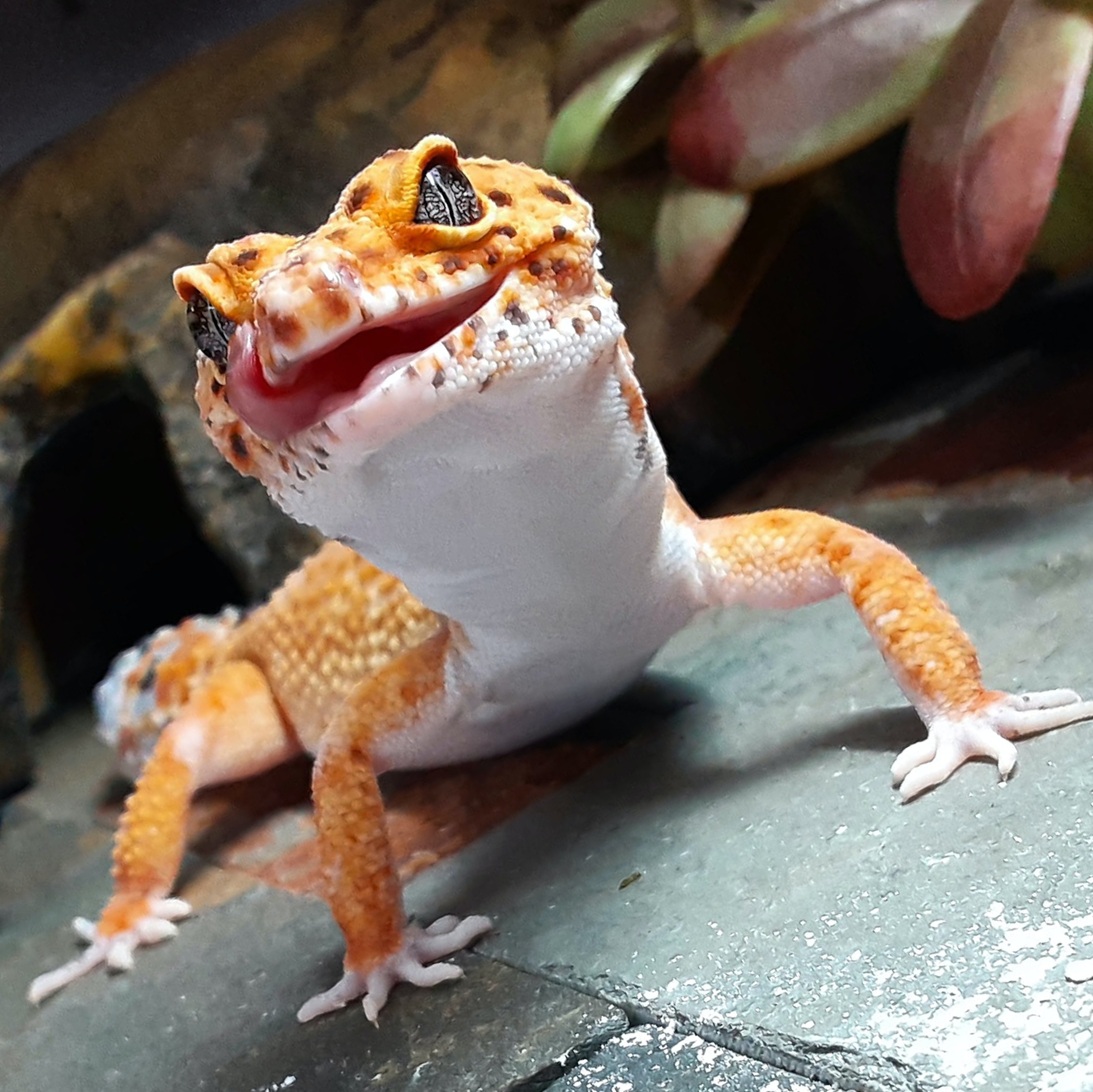 Photo by Karen McLeod https://unsplash.com/photos/white-and-brown-lizard-on-gray-wooden-table-pNT0nNKTiYk
Photo by Karen McLeod https://unsplash.com/photos/white-and-brown-lizard-on-gray-wooden-table-pNT0nNKTiYkLeopard
Leopard geckos like to have a basking spot with a temperature of the high 80sF with the cool end of the habitat at 75 degrees F. At night, the temp can drop as low as 70 degrees F.
Panther
Panther geckos like to have a basking area that is 80-85 degrees F. The temperature of the enclosure should not go below 70 degrees. Humidity should be at 60%.
Tokay
Tokays like it really hot during the day - 80-90 degrees and 70-80 degrees at night. Humidity should be at 70% and never less than 50%.
White-lined
White-lined geckos like to have a habitat of 80-90 degrees F during the day and 70-75 degrees F at night. Humidity should be 65-75%.
Habitat
Spot-clean the habitats every day and disinfect them at least once a month. Provide plenty of climbing and hiding places in the cage, especially if you have more than one gecko in your habitat. Live, reptile-safe plants, or artificial plants can be used in the habitat.
Crested
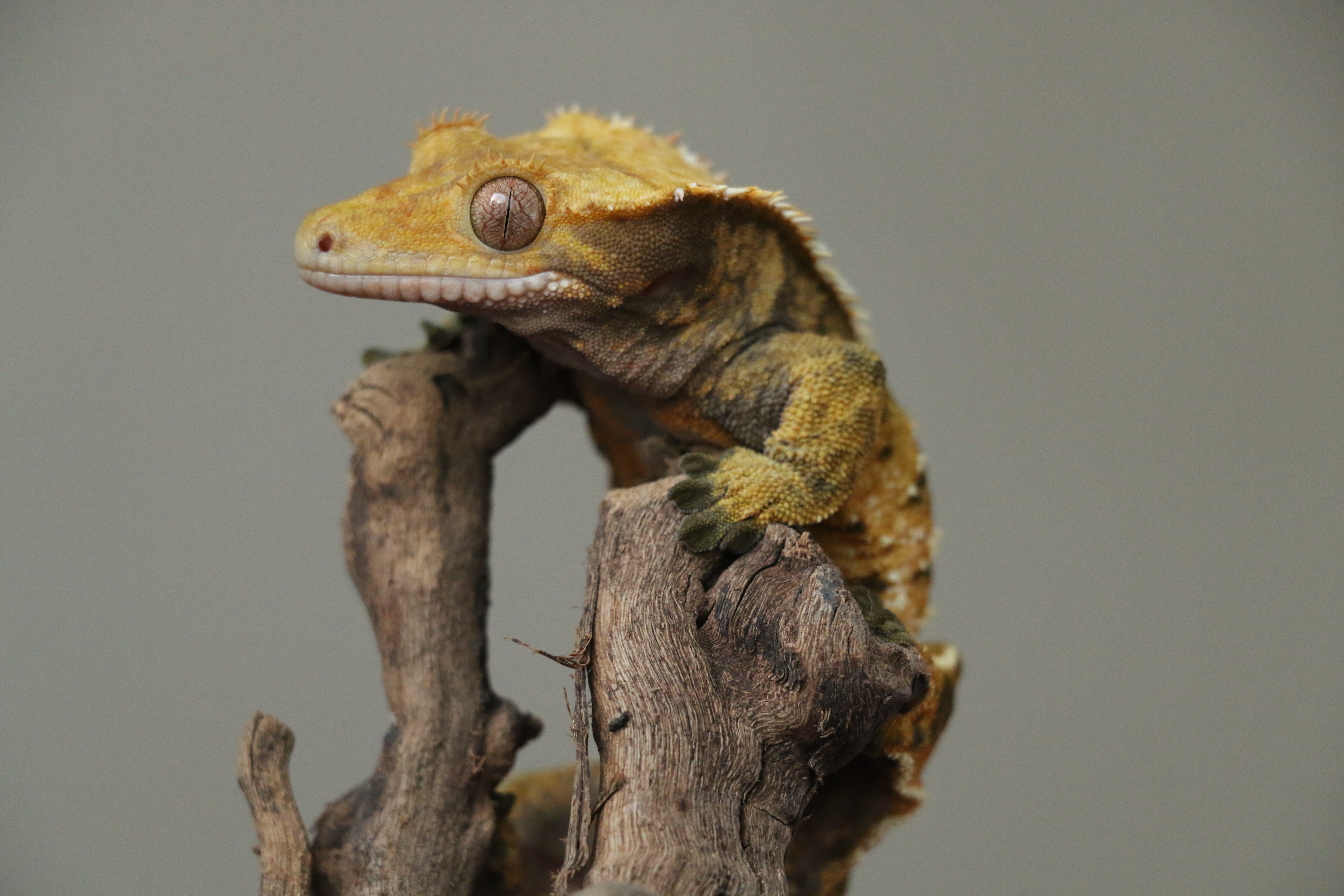 Photo by Pierre Bamin https://unsplash.com/photos/brown-lizard-on-tree-branch-in-close-up-photography-25GuApHq2Ps
Photo by Pierre Bamin https://unsplash.com/photos/brown-lizard-on-tree-branch-in-close-up-photography-25GuApHq2PsIf you just have one crested gecko, a 20-gallon tall tank would be ok. But if you have more, you should have at least a 30-gallon tank. They are used to living among trees, so lots of branches and plants and vines would be ideal for them. Make sure you also have hidies for them.
Crested geckos tend to eat the bedding, along with their food, so moss, coconut fiber, or paper towels would be best to put at the bottom of the cage. Gravel is not a good idea because it is difficult to clean and sand is dangerous to swallow.
They have no special lighting needs.
Day
There are many different types of day geckos and their need for space varies. Small ones can live in a 20-gallon tank, but larger ones need more space. The enclosure should be tall so the geckos can climb. They will need branches, vines, and other plants to climb on and hide in.
The best substrates are moss, soil, and orchard bark so that the humidity in the habitat stays high.
Crested geckos do need UV lighting 10-12 hours a day. The UV bulbs need to be changed a couple of times a year to ensure that they continue to put out UVB rays.
Golden
A tall 20-gallon tank or larger is best for these geckos, larger if you have more than one. They love to climb and can climb along the glass with their toe pads. Like all geckos, they need places to climb and hide and their bedding should retain moisture.
They have no special needs for light.
House
Similar to other geckos, they need a tall 20-gallon tank for one, with climbing and hiding structures. Bedding should be moss, soil, or paper. They have no special lighting needs.
Leopard
They will be OK with a 10-gallon tank, or larger. They are fine with living alone. They need climbing and hiding spaces. Paper and reptile carpet are good to line the bottom of their cage. They have no special lighting needs.
Panther
Panther geckos are not the climbers that other geckos are. They like to stay close to the ground, so they don’t need a tall cage. A 10-gallon tank is good for one, 20-gallons or more if you have more than one gecko. They still need items like plants and branches to hide under and climb over, the items just shouldn’t go up very high. They will do well with bedding that retains moisture. They don’t tend to have special lighting needs, but a UV light for 10-12 hours a day might help with vitamin D.
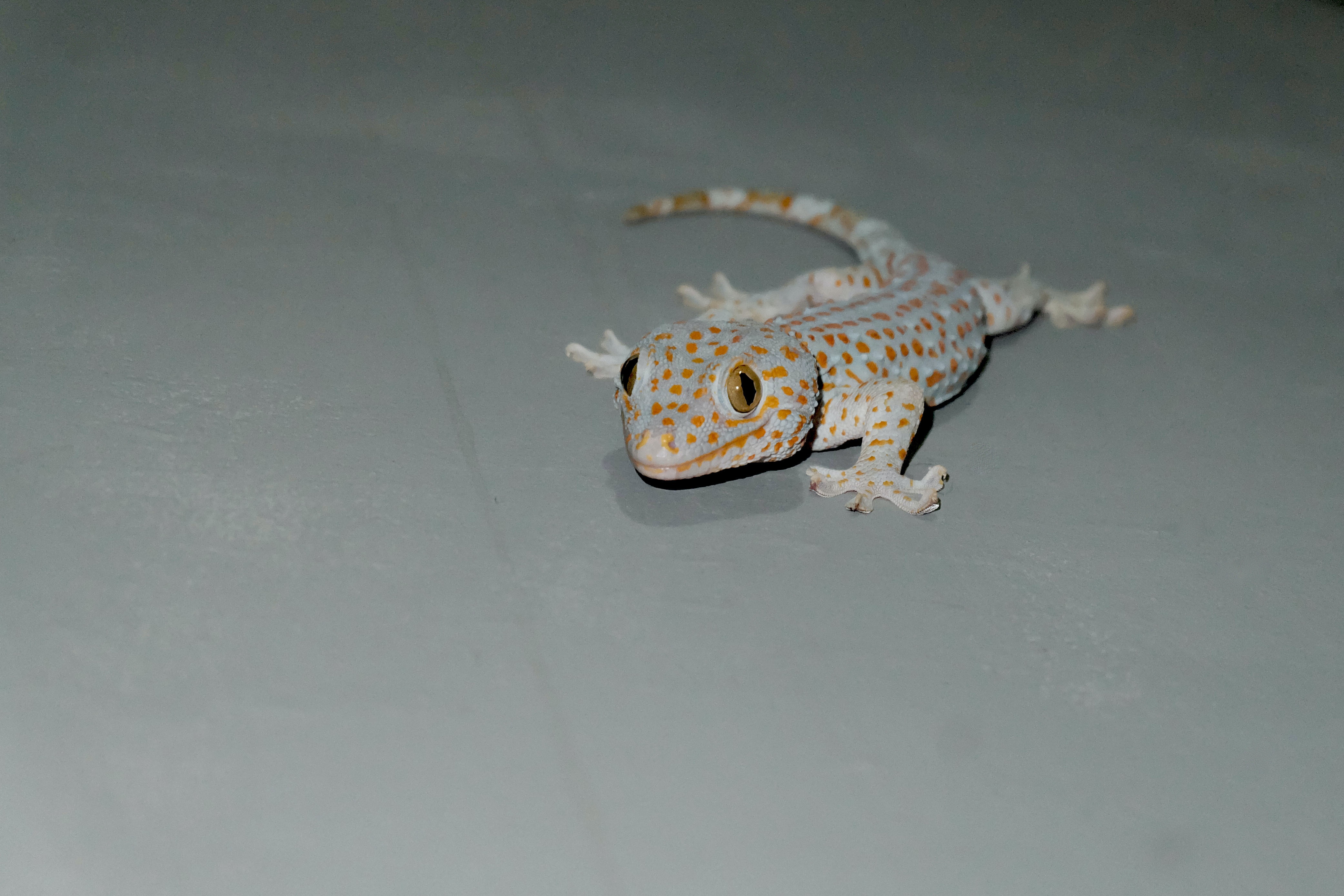 Photo by James Tiono https://unsplash.com/photos/white-and-brown-lizard-on-white-surface-mzBEQXL_4Ak
Photo by James Tiono https://unsplash.com/photos/white-and-brown-lizard-on-white-surface-mzBEQXL_4AkTokay
A 10-20 gallon tall tank is best for these geckos. The lid should be very secure so they don’t climb up and escape. They should have climbing and hiding structures and a water dish. They have no special lighting needs.
White-lined
You can have a few white-lined geckos in the same habitat. A 20-gallon tank would be the minimum size, and bigger is better. They love to climb, so a tall habitat is good for them. Make sure the top is secure. At least the top should be wire, and maybe one side of the habitat as well, to provide enough ventilation.
The habitat should have lots of branches, vines, and other items for the gecko to climb on and hide under. You can also get structures from the pet store specifically made for geckos and other reptiles to hide in. Their water dish should be small and shallow.
The bottom of the cage should consist of coconut fiber, mulch, moss, or paper. The first three substances might help to keep the humidity up more.
They have no special lighting needs.
Diet
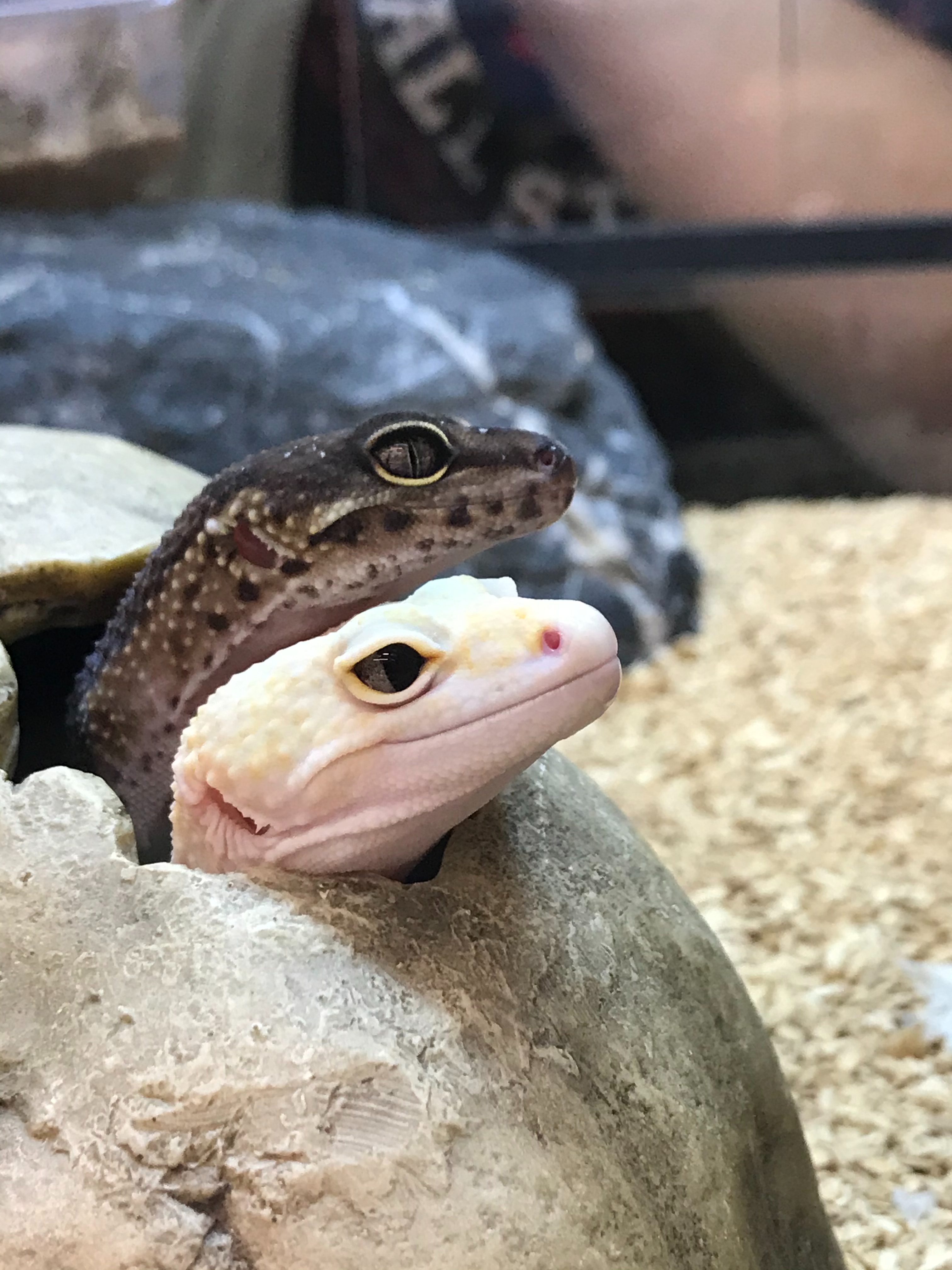 Photo by Jon Leclainche https://unsplash.com/photos/black-and-white-snakes-photograph-Py06_F8gXwc
Photo by Jon Leclainche https://unsplash.com/photos/black-and-white-snakes-photograph-Py06_F8gXwcGeckos like insects and sometimes fruit. The food should be dusted with vitamins and minerals. Provide them with a water bowl, but they will get most of their hydration from droplets on leaves.
Crested
You can buy crested gecko food from the pet store and supplement that with crickets and other insects. You should dust the insects with vitamins before a feeding. They can also have fruit every once in a while. They should be fed three times a week in the evenings.
You should give them a small shallow water dish, but they will get most of the water from the leaves of the plant.
Day
Day geckos eat vitamin dusted insects and some fruit two times a week. They should be fed in the mornings.
They may drink from a bowl but will mostly enjoy the liquid that drops off leaves in their cage.
Golden
Golden geckos will eat many different vitamin-dusted insects - crickets mostly, but also worms, roaches, and others. It’s ok to give them mealworms sometimes. They will also eat fruit. They like to eat in the evenings. It is suggested that you vary their feeding schedule to keep them interested. So every other day, then every day, then skip a few days, etc.
You should give them a bowl of fresh water but know that they will mostly drink drops off of leaves in their habitat.
House
They should be fed every other day in the evening. They like insects that have been dusted with vitamins. They should have fresh water.
Leopard
They will eat insects and sometimes a very small mouse. They have picky stomachs, so be careful about the bedding on the ground in the area you feed them. Feed adults a couple times a week. Leopard geckos probably will drink from their bowl, in addition to bathing in it.
Panther
Panther geckos should eat vitamin-dusted insects like crickets every day or every other day. They should also have a shallow water dish.
Tokay
Toakys will eat a lot every day or every other day. Feed them vitamin-dusted insects or very small mice. Include a shallow water dish in their habitat.
White-lined
They like crickets the most, but you can also feed them roaches, locusts cutworms, and silkworms. Limit the feeding of worms that are difficult to digest, like mealworms. You can put vitamin dust on the prey every once in a while before you put it in the cage. They should be fed every other day in the evening.
You can give them a shallow small water bowl, but they will also drink drops that condense on the leaves in their habitat.
Lifespan and Health
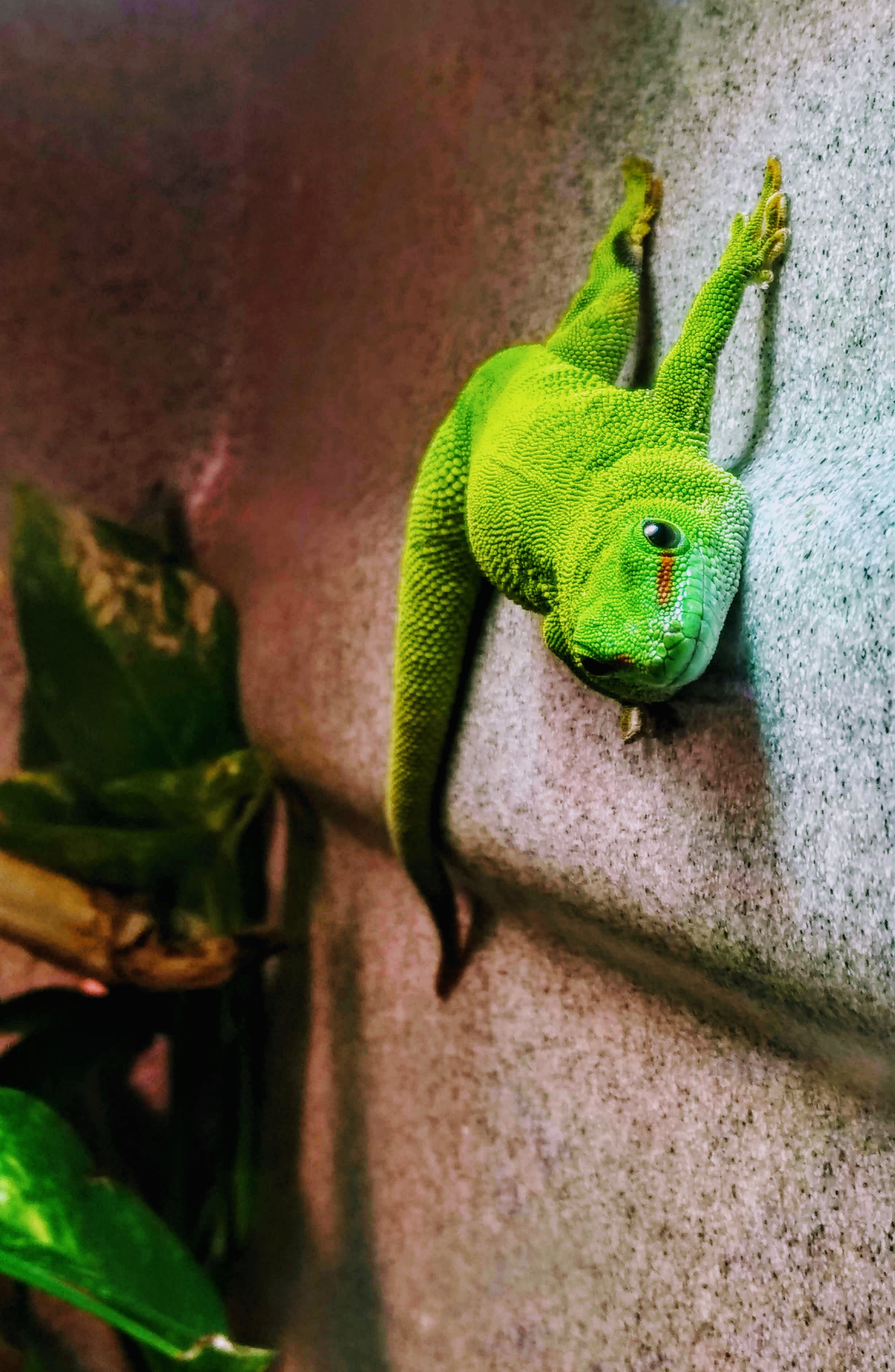 Photo by Mysti Jones https://unsplash.com/photos/green-crocodile-plush-toy-on-gray-concrete-wall-taXgNp89ffk
Photo by Mysti Jones https://unsplash.com/photos/green-crocodile-plush-toy-on-gray-concrete-wall-taXgNp89ffkCommon health problems include mouth rot disease, respiratory disease, and parasites. They sometimes get a disease related to vitamin D deficiency, so make sure they get light and vitamins.
Crested
Crested geckos tend to live 10-20 years
Day
The larger they are, the longer they tend to live. The small ones can live up to 10 years and the larger ones can live for 20 years.
Golden
10 years
House
5 or more years as pets
Leopard
20 or more years
Panther
6-10 years
Tokay
About 10 years
Whitelined
10-20 years



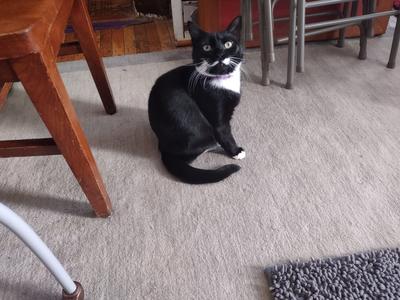


New! Comments
Have your say about what you just read! Leave me a comment in the box below.